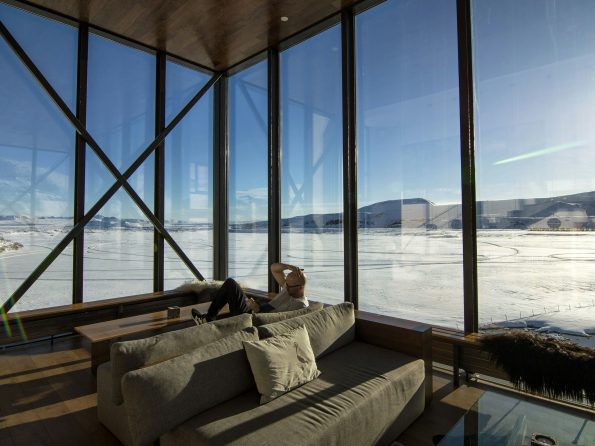Bespoke Glass Processing and Laser Solutions for Interior Design
The demand for unique, customized elements is continually on the rise due to the personalization factor it brings to a house. Among these elements, bespoke glass processing and laser solutions have emerged as a revolutionary approach, offering unparalleled precision and creativity.

This advanced technology has expanded the horizons of designers and architects. It has made it possible to create complex patterns and designs that were not attainable previously. This article explores the integration of laser technology in glass design and the technical aspects of glass processing.
This article explores the use of glass laser processing to create unique and custom interior designs to increase curb appeal.
Laser Technology in Glass Designing
Traditionally, glass cutting and etching were labor-intensive processes requiring considerable skill and time. However, the advent of laser processing solutions has streamlined these processes, allowing for greater precision and complexity in designs.
As stated by Novanta Photonics, it is widely adopted for machine manufacturing because of its numerous advantages. They are adept at answering traditional challenges of designing micro areas. Therefore, more and more machine builders are turning to laser processing solutions to solve complex application-based challenges.
However, besides machine building, these laser processing solutions are also used for cutting, engraving, and marking glass with exceptional accuracy. This can help create intricate patterns and detailed artwork that would be difficult to achieve by hand.
For example, the use of water for laser glass processing with a 355 nm picosecond laser can offer high ablation efficiency. A PubMed study also states that cooling the water can offer higher laser power accuracy for better precision.
The laser works by emitting a focused beam of light that melts, vaporizes, or fractures the material in a controlled manner. Since there is no physical contact between the physical tool and the glass, there is less chance of damage or flaws.
Additionally, the precision of laser technology allows for the creation of micro-details and complex geometries, opening up new possibilities in glass design. This capability is particularly advantageous in interior design, where bespoke and fine details can significantly enhance the aesthetic appeal of a space.
Technical Aspects of Glass Processing
Using computer-aided design (CAD) software, the engineers begin by creating a digital design for the final piece. Based on this design, the laser machine is given a set of instructions on how to work on the design. The machine follows these instructions to cut, engrave, or etch the glass with precision.
One of the critical factors in laser glass processing is the type of laser used. CO2 lasers are commonly employed for cutting and engraving glass due to their high power and efficiency. These lasers produce a wavelength that is readily absorbed by the glass for creating precise engravings and clean cuts.
However, CO2 laser cutters can emit air pollutants that can be hazardous to health. An ACS Publications study shows that nanoparticles ranging from 15.4 to 86 nm in size can be released. This is especially true when cutting plastics with CO2 lasers.
Also, the concentration of nanoparticles released through these lasers increases with time. Therefore, it is advised to seek other technologies to create custom glass designs. For example, laser-induced backside wet etching (LIBWE) can be a better alternative, especially for glass materials.
Making the glass wet can help prevent the uncontrolled spread of the liquid absorbent. This ensures that the glass does not crack when processing with laser beams.
Interior Designing With Bespoke Glass Design
Customized glass elements add a touch of elegance and sophistication to any space. For instance, laser-etched glass panels can be used as room dividers, providing privacy while allowing light to pass through.
Bespoke glass designs also enable designers to create personalized spaces that reflect the client’s style and preferences. From detailed patterns and logos to artistic engravings and textured surfaces, the possibilities are virtually limitless.
Consider this example from an MDPI study where bumps are formed on coated glass by using lasers. Researchers were able to create an effective method for glass bump generation because of the high-intensity interaction of laser radiation on the film–glass contact. They have been able to combine the processes of coating evaporation and bubble formation into one with picosecond pulses.
Glass can be customized to match the color scheme, theme, or overall aesthetic of the space. This ensures that a cohesive and harmonious design is created with the bespoke glass processing. Additionally, the transparency and reflective properties of glass can enhance the sense of space and light within a room.
Glass can be used in various forms, such as windows, doors, partitions, countertops, and even furniture. Each of these applications can be customized to create unique and eye-catching designs.
For example, laser-engraved glass tabletops can serve as a stunning focal point in a dining room or living area. Similarly, custom glass doors can add a touch of elegance to an entryway or office space.
As stated by Housing.com, the beauty of glass design for interiors can be found in blending it with the exteriors. Since glasses are transparent, blending the indoors with the exteriors and the surrounding natural environment makes the overall look appealing. Moreover, the glass material does not require any upkeep, which makes it ideal for vast projects, from small huts to holiday homes.
Frequently Asked Questions
What kind of laser to engrave glass?
Custom logos and designs may be etched on almost any glass object using CO2 laser engraving, which also creates a lovely frosted appearance. However, the efficiency and effectiveness of the engraves depend on the laser power and accuracy.
How does laser etching inside glass work?
A concentrated light beam is used in laser etching within glass to produce a pattern on the surface of the material. Tiny fragments of material are removed as the glass is vaporized by the extreme heat of the laser beam. The material absorbs the energy from the beam and transforms it into heat.
How is glass used in interior design?
Glass can be used in interior design in many ways, including creating the illusion of space, brightening dark areas, reducing noise, and more. Some types of glasses used for interior design are clear, frosted, lacquered, tinted, stained, beveled, etc.
To summarize, the integration of bespoke glass processing and laser solutions in interior design has opened up a world of possibilities for designers and architects. The precision and versatility of laser technology have revolutionized the way glass is used in interior spaces.
They now allow for the creation of intricate and personalized designs that were once unimaginable. Laser-processed glass offers countless possibilities to improve the visual appeal and functionality of interior spaces, from ornamental panels to personalized furniture.

